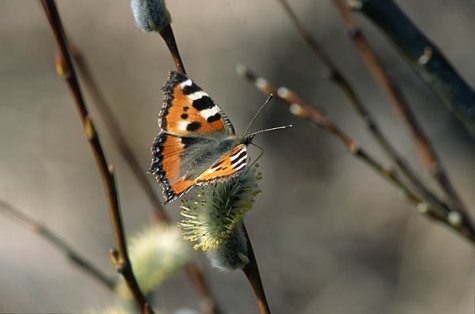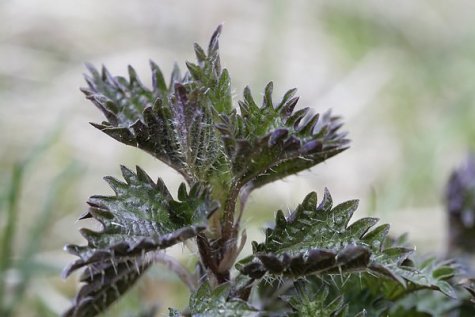Photos: Arne Ader
Translation: Liis
Small tortoiseshell butterfly.
|
Small tortoiseshell butterfly
|
Väike - koerliblikas e koerliblikas |
|
|
|
|
This is our early ”varied summer” herald because it has wintered as an imago or butterfly. That is, the autumn generation of butterflies have hidden themselves in attics, annexes, summer houses … ever near people, but in hiding places in nature too. As the spring sun gets warmer they come to life from their winter numbness, and so we meet the tortoiseshells in cultured landscapes or near buildings or at roadsides, mostly in open landscapes. For the spring nights they look for some sheltered spot and for camouflage they only close their wings: the undersides resemble dried leaves – nature is clever, simple and effective. Look closer when you get a chance; when it stops for instance on willow catkins the tortoiseshell has its patterned wings open.
In cold, windy early spring weather the butterflies stay still for days; when the weather is sunny and lovely again they can start flying around again on their butterfly business. As spring advances we notice pairs of butterflies that have found each other and their mating play. The stinging nettle (Urtica dioica ) brings its shoots out early; on them eggs are laid for the issue of the summer generation of tortoiseshells. From the eggs larvae hatch that feed on the nettle leaves. NB: for the larvae of the small tortoiseshell and the peacock butterfly (Nymphalis io) stinging nettle is the only food plant. So if there are no stinging nettles in a warm corner of the garden, neither will there be tortoiseshells...
It is said that if your first butterfly in spring is many-coloured, then your summer will be varied too.
Stinging nettle.
EARLY SPRING has arrived nearly everywhere:
Jaak Jaagus. Aastaajad ja kliimamuutused – Seasons and climate changes
Winter was followed by LATE WINTER, the period of (final) melting of the snow. Its beginning is counted from the day from which onwards thaw weather dominates and the thickness of the snow cover decreases. Later periods with temporary snow cover and cold weather in spring, after the melting of the winter snow, are also included in late winter.
EARLY SPRING starts after the final melting of the snow cover. Now the ground thaws and warms up. Frost free days occur ever more often.
SPRING (in the narrower sense) arrives with the start of the vegetation period of plants. A definite sign is the permanent rise of the average temperature of day and night above +5 C.










